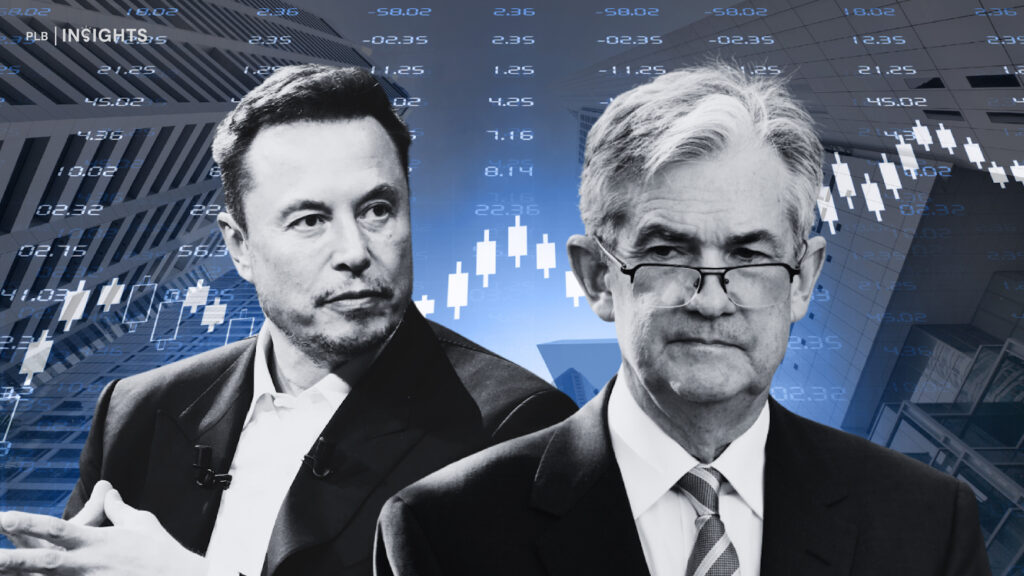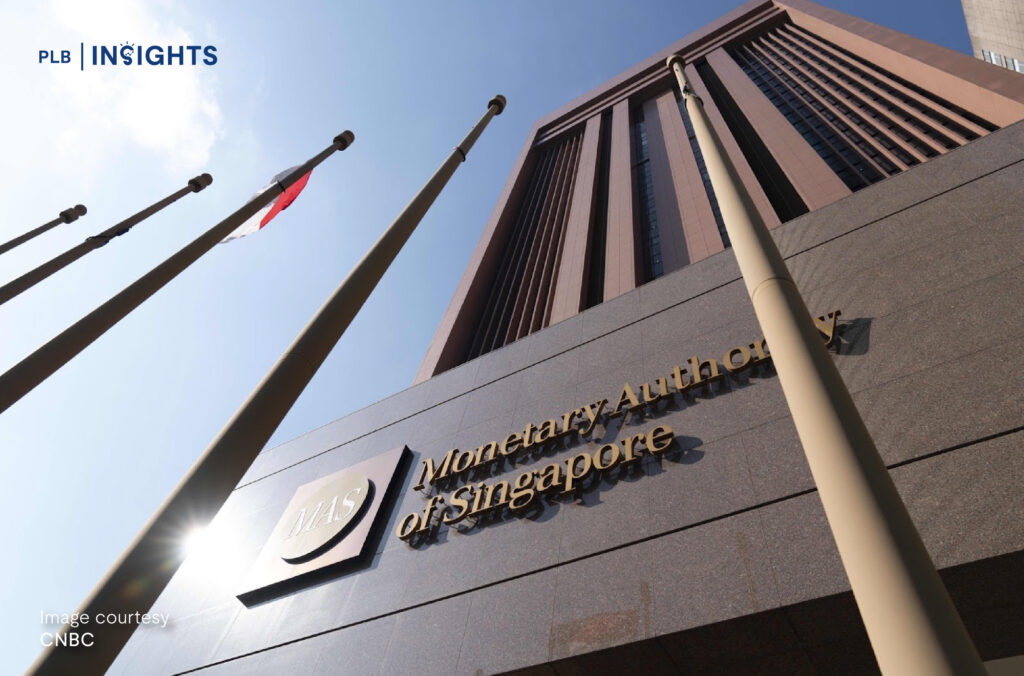
In a world marked by rapid change, few constants remain, and one of those constants—the U.S. Federal Reserve—may soon face unprecedented scrutiny. With Trump’s return to office, there is growing speculation that sweeping reforms may reshape America’s bureaucratic landscape. These changes are expected to ripple across the globe, influencing geopolitics, economic stability, and how other governments respond to shifts in U.S. policy.
One of the most audacious developments on the horizon is the creation of the Department of Government Efficiency (DOGE), led by tech entrepreneur Elon Musk and political newcomer Vivek Ramaswamy. Despite its humorous acronym, DOGE is poised to wield significant power, carrying a mission to streamline government functions and possibly challenge long-standing institutions. Among its boldest ideas is Musk’s recent suggestion of dismantling the Federal Reserve—a soon-to-be 111-year-old institution that has guided U.S. monetary policy for over a century.
Musk’s “#EndTheFed” comments have drawn attention worldwide, as he hinted at shifting monetary control directly under the government rather than leaving it with an independent central bank. While Federal Reserve Chair Jerome Powell and the institution itself have vowed to continue fulfilling their mandate, the prospect of abolishing the Fed introduces a seismic shift in economic governance. The idea of a government-controlled monetary policy raises fundamental questions about interest rates, inflation management, and economic stability—not only in the U.S. but also in interconnected economies across the globe.
The potential dismantling of the Federal Reserve compels us to imagine a world without its stabilising influence. What would happen if the mechanisms that currently guide monetary policy were reabsorbed into the government? Would the result be greater economic flexibility or more political interference in financial markets? And how would this influence interest rates, lending, and investment on a global scale?
In this article, we will explore how shifting monetary policy back under direct government control could reshape interest rates, inflation, and global economic dynamics. We will also examine the far-reaching impacts this move might have on Singapore’s economy, from shifts in borrowing costs to potential effects on the property market. While the legal challenges to such a transformation are complex, our focus here is on envisioning the economic landscape that could emerge if the Federal Reserve were no longer a central player in the financial system.

Understanding Monetary Policy and Government Control
Monetary policy is the set of actions taken by a central bank to manage a country’s money supply, interest rates, and overall economic stability. Through tools like adjusting interest rates and controlling money supply, a central bank—such as the Federal Reserve in the U.S.—can influence inflation, employment rates, and economic growth. The Fed’s mandate is to balance stable prices, full employment, and moderate long-term interest rates, keeping it relatively independent of the political influences that could lead to short-term decision-making at the expense of long-term stability.
Bringing monetary policy under direct government control would mean shifting this power from an independent institution to the hands of the government. In practical terms, this could allow the U.S. government to directly set interest rates, control inflation, and influence lending practices without the traditional checks and balances provided by an independent central bank. While this may offer greater flexibility in achieving short-term policy goals, it could also raise risks of political influence over financial decisions, potentially leading to unstable markets and economic volatility.
In Singapore, monetary policy is managed by the Monetary Authority of Singapore (MAS), which is the country’s central bank and financial regulator. MAS is a statutory board under the Ministry of Finance and operates as part of the government. However, MAS is granted significant operational autonomy in managing monetary policy, which allows it to make objective decisions focused on the stability and health of Singapore’s economy. Unlike many central banks that adjust interest rates, MAS primarily manages monetary policy by controlling the Singapore dollar’s exchange rate, a unique approach that has proven effective for Singapore’s trade-dependent economy.
Although MAS is under the Ministry of Finance and therefore part of the government, its structure still enables a level of independence that allows it to make sound economic decisions insulated from day-to-day political pressures. The potential move in the U.S. to bring monetary policy under direct government control highlights the delicate balance between government oversight and economic stability. While MAS operates within the government structure, its autonomy in monetary matters underscores the importance of allowing economic experts to manage financial policy for long-term stability, a model that could be at risk if direct government control were implemented in Singapore or elsewhere.
How Disastrous Is It To Put Control Of Monetary Policy Under Government Control?
The idea of bringing monetary policy under direct government control comes with significant risks, especially when considering worst-case scenarios. In a worst-case situation, a government could manipulate monetary policy for short-term political gain, leading to economic instability and long-term consequences. Imagine a scenario where a government, eager to boost popularity before an election, decides to keep interest rates artificially low to stimulate spending and make the economy appear stronger. This short-term boost could lead to runaway inflation, as increased borrowing and spending drive up prices. In this environment, unchecked government control over monetary policy could cause a cycle of economic overheating, loss of purchasing power, and eventual recession as the market corrects itself. In an extreme case, hyperinflation could occur, where prices skyrocket, and the currency loses value rapidly, devastating consumer wealth and international confidence in the economy.
On the other hand, the best-case scenario could involve a government using its direct control over monetary policy to drive economic growth, reduce inequality, and ensure stable employment. In this optimistic vision, the government could quickly adjust policies to address crises, reduce unemployment, or spur innovation without waiting for the slower, more cautious responses of an independent central bank. If the government used its control responsibly, it could align monetary policy closely with its fiscal goals, creating a coordinated approach to tackling national issues. For instance, it could direct low-interest loans to key sectors, such as green technology or infrastructure, which would contribute to long-term growth. This direct control could be highly effective, assuming the government acts rationally and prioritises the economic well-being of the nation over political gain.
In reality, the effects of government-controlled monetary policy likely fall somewhere between these extremes. The outcome depends largely on the government’s motivations, priorities, and commitment to responsible economic management. A rational, transparent, and accountable government—one that resists the temptation to manipulate monetary policy for political ends—could potentially manage monetary policy well. Singapore offers a practical example of this. While the Monetary Authority of Singapore (MAS) operates under the Ministry of Finance, it has been given the autonomy to make sound economic decisions for the country’s long-term stability. MAS has successfully managed Singapore’s monetary policy by focusing on exchange rate management, which has helped control inflation and maintain economic growth in a trade-dependent economy.
In Singapore, the alignment of monetary policy with government goals has worked because the government has demonstrated fiscal discipline, long-term planning, and an understanding of the global economy. The MAS, though technically under government control, operates with a high degree of professionalism and autonomy, helping Singapore maintain its status as a financial hub with stable economic conditions. This suggests that under a rational, sensible government with a commitment to stability, government control over monetary policy need not be disastrous.
However, the success of such a system relies heavily on the government’s capacity to act independently of short-term political pressures. In countries without the same level of institutional transparency, discipline, or forward-thinking governance, direct government control over monetary policy could lead to serious economic mismanagement. Therefore, the question of whether government-controlled monetary policy is disastrous or beneficial depends largely on the context of the government’s intentions and its ability to manage the economy responsibly.

What is after #EndTheFed?
Aswath Damodaran, a respected finance professor at NYU, argues that much of the Federal Reserve’s influence is narrative-driven rather than grounded in tangible control over markets. In his view, the Fed often behaves like Chanticleer, the rooster from an old fable, who believed his crowing caused the sun to rise. Just as Chanticleer didn’t actually influence the sun, the Fed’s impact on rates and markets may be more perceived than actual. Damodaran points out that the Fed primarily sets the Fed Funds rate, an overnight rate that doesn’t directly dictate consumer or business interest rates. Rather than leading, the Fed reacts to market conditions, influenced by broader economic factors that ultimately drive interest rates, stock prices, and growth independently of its actions (FedDelusions).
Damodaran highlights that investors and market watchers often attribute too much power to the Fed, believing it has control over market trends, stock valuations, and even inflation levels. This perception has created a “Fed narrative,” where every policy move or rate adjustment is analysed as if it fundamentally drives economic outcomes. However, Damodaran’s data suggests that the Fed’s actual influence is more limited, especially outside of crisis periods. He argues that, rather than being the market’s true leader, the Fed often follows market signals, adapting its policies based on existing economic data.
If this narrative around the Fed were to crumble, market reactions could be severe. Investor confidence in the Fed as a stabilising force might diminish, leading to more volatility as markets lose a central figure they have historically looked to for guidance. In such a scenario, without the Fed’s perceived “safety net,” markets might respond more acutely to economic data, and volatility could increase as investors attempt to navigate a landscape without the Fed’s influence acting as a buffer. This shift could make financial markets more reactive to economic fundamentals rather than policy signals, potentially creating a less predictable and more self-regulating environment.

Impact on Singapore’s Property Market Without the ‘Guard Rails’ of Fed Influence
If the Federal Reserve’s influence on global markets were diminished, and the “guard rails” of central bank policy guidance weakened, Singapore’s property market could experience increased volatility. Historically, central banks like the Fed and the Monetary Authority of Singapore (MAS) have provided stability by controlling interest rates and managing inflation expectations. These “guard rails” have guided both investor and consumer sentiment, contributing to steady price appreciation in Singapore’s property market. Without the Fed’s stabilising narrative, however, Singapore’s property sector could face increased uncertainty, as the traditional market signals may become less reliable.
One immediate impact could be felt through fluctuating interest rates. The Fed’s influence often shapes global interest rate trends, with Singapore’s mortgage rates typically tracking closely to U.S. rates. Without this steady guidance, interest rates may become more volatile, making it harder for potential homeowners to forecast financing costs. If interest rates spike unexpectedly, this could dampen demand for property, as buyers become hesitant to commit to mortgages with unpredictable rates. Conversely, rapid drops in interest rates might encourage speculative buying, leading to short-term price hikes that could destabilise the market over time.
Furthermore, the absence of a strong Fed narrative could lead to higher risk premiums as investors seek greater compensation for uncertainty. This could result in more conservative lending practices, with banks tightening criteria for home loans and increasing borrowing costs. For Singapore’s property market, which relies on both local and foreign investment, higher risk premiums and stricter lending standards may slow down transactions, particularly in the high-end market where foreign buyers play a significant role. In the long term, this could lead to reduced liquidity in the property market and slower price growth, as both individual and institutional investors adopt a more cautious stance.
Additionally, without clear signals from the Fed, inflation expectations may become more difficult to manage. In Singapore, where MAS uses exchange rate policy rather than interest rate changes to control inflation, a less predictable global inflation outlook could complicate monetary policy decisions. High inflation could erode purchasing power, making it harder for average Singaporeans to afford property, especially if wages do not keep pace. In this scenario, Singapore’s property market might see reduced demand, as potential buyers delay purchases due to the combined pressures of rising living costs and uncertain financing conditions.
The loss of a central guiding influence could also encourage short-term speculation and profit-taking in Singapore’s real estate market. Without a reliable anchor, markets often become more sensitive to investor sentiment and short-term news. This could lead to more frequent property market cycles, with rapid price increases followed by corrections. For a market like Singapore’s, known for its stability and appeal to long-term investors, this increased cyclicality may deter cautious buyers, especially those who rely on consistent returns for wealth accumulation.
Finally, if both the U.S. and Singaporean central banks appear less capable of steering economic outcomes, it may lead to decreased confidence among property buyers and investors. A loss of trust in central banks to effectively manage economic cycles could amplify the effects of market downturns, as buyers and investors act more defensively. In Singapore, where property is a significant investment vehicle, this could translate to reduced demand, especially in the luxury segment, and downward pressure on property prices as buyers wait out periods of volatility.

Closing Thoughts
In summary, without the “guard rails” of central bank guidance, Singapore’s property market could become more vulnerable to interest rate swings, inflation risks, and speculative cycles. The stability that has historically attracted both local and international investors may give way to a more unpredictable market, where investment decisions are driven more by short-term sentiment than by long-term confidence in economic stability.
While the absence of central bank “guard rails” could introduce increased volatility and uncertainty, it’s important to note that Singapore’s property market is uniquely resilient. The Monetary Authority of Singapore (MAS) has consistently demonstrated prudent regulatory oversight, managing property cooling measures and exchange rate policies effectively to ensure market stability. Additionally, strong demand fundamentals, robust foreign investment, and Singapore’s reputation as a financial hub help insulate its property market from extreme fluctuations. Thus, while diminished Fed influence may lead to some challenges, Singapore’s property sector remains supported by sound governance and a stable economic framework that can mitigate many of these potential negative effects.
Have more questions about navigating the property market in the current landscape? Do reach out to our team of experienced consultants here and we’ll be glad to advise with personalised consultations for your portfolio. See you in the next one!







